The Abbey and Altenmünster of Lorsch are situated in Lorsch, about 10 km east of Worms in Germany. The Abbey of Lorsch was built in 760-764. Charlemagne visited the abbey on his way back from a journey to Italy. In 876, the Lorsch Abbey became the burial place of Ludwig II the German, a grandson of Charlemagne, the son and grandson of Ludwig II were also buried in the chapel of the abbey. During the Thirty Years' War (1618-1648), the Abbey of Lorsch was severely damaged, most of the buildings were destroyed, including the burial chapel. The King's Hall, the Königshalle or Torhalle, and the ruins of the church are the only remaining parts of the Abbey of Lorsch. The King's Hall is the oldest Carolingian building north of the Alps. The King's Hall is decorated with paintings. Nine different layers of painting were found during restoration works. The first painting date from 830, the last painting date from the 17th century. The herb garden of the Abbey of Lorsch is based on the Plan of Sankt Gallen and a book of medicinal cures, the Lorsch Pharmacopoeia, written in Lorsch in c. 795. The Lorsch Pharmacopoeia was inscribed on the UNESCO Memory of the World Register and is housed in the State Library Bamberg. The Abbey and the Altenmünster of Lorsch are situated about 40 km south of the UNESCO World Heritage Messel Pit and also near the UNESCO World Heritage Upper Middle Rhine Valley. The Abbey and the Altenmünster of Lorsch were declared a UNESCO World Heritage in 1991.
www.werelderfgoedfotos.nl © Copyright World Heritage Photos classic car road trip
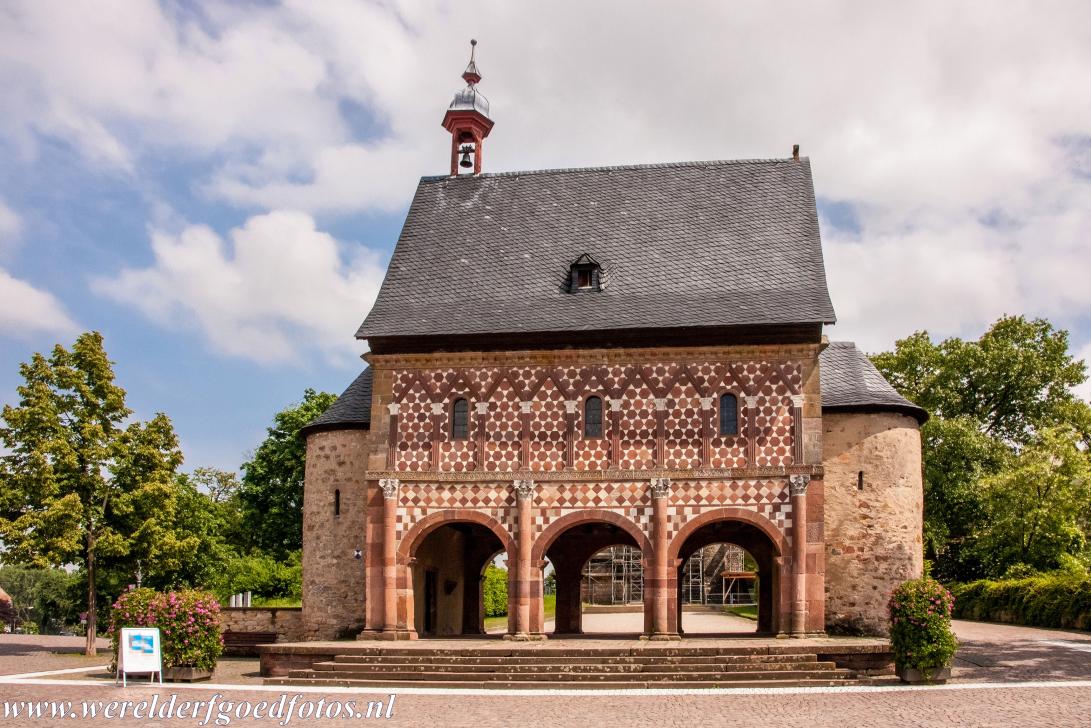
The King's Hall of the former Abbey of Lorsch. The Imperial Abbey of Lorsch was founded in 764. In the 9th century, the King's Hall was built by Ludwig II the German, grandson of Charlemagne. The abbey was protected by Charlemagne. In the 9th century, the Abbey of Lorsch became one of the major centres of power in Europe. The Abbey and Altenmünster of Lorsch were declared a UNESCO World Heritage in 1991. The Altenmünster of Lorsch was the mother abbey.

The King's Hall of the former Abbey of Lorsch. The Imperial Abbey of Lorsch was founded in 764. In the 9th century, the King's Hall was built by Ludwig II the German, grandson of Charlemagne. The abbey was protected by Charlemagne. In the 9th century, the Abbey of Lorsch became one of the major centres of power in Europe. The Abbey and Altenmünster of Lorsch were declared a UNESCO World Heritage in 1991. The Altenmünster of Lorsch was the mother abbey.
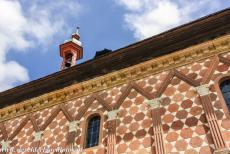
Abbey of Lorsch: The façade of the King's Hall. The King's Hall is the oldest Carolingian building north of the Alps and has retained its original appearance through the centuries. The abbey was one of the most renowned monasteries in the 9th century, it became a centre of culture, power and spirituality in the Holy Roman Empire. The Abbey of Lorsch once housed one of the largest libraries during the Middle Ages.es.
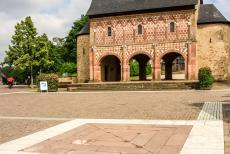
The Abbey of Lorsch was abandoned after the Reformation. During the Thirty Years' War (1618-1648), the Abbey of Lorsch was heavily damaged by Spanish troops, most of the buildings were destroyed. The King's Hall and the church ruins are now the only remaining parts of the Abbey of Lorsch. The white square pattern on the pavement marks the spot where the west gate of the abbey once stood.
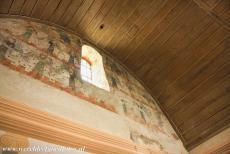
Abbey of Lorsch: The upper floor of the King's Hall is decorated with wall paintings. The oldest painting dates from the 9th century, the time the King's Hall was constructed. The Carolingian murals and Gothic frescoes are in a good condition. The roof and gable of the King's Hall were added around 1390 AD.
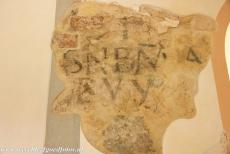
Abbey of Lorsch: The murals inside the King's Hall. Nine different layers of painting were found during restoration, the oldest mural date from 830, the last from the 17th century. The Abbey of Lorsch is situated in the town of Lorsch, about 10 km east of the city of Worms in Germany. The King's Hall is only accessible by guided tour.
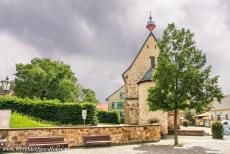
Abbey of Lorsch: The King's Hall and the ruins of the abbey church are the only remaining parts of the Abbey of Lorsch. The function of the King's Hall is a great mystery. The King's Hall is also called Königshalle or Torhalle. The Abbey and the Altenmünster of Lorsch were inscribed on the UNESCO World Heritage List in 1991.
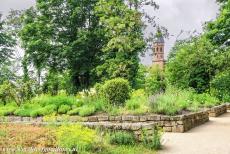
Abbey of Lorsch: The herb garden is based on the Lorsch Pharmacopoeia, an important book of classical herbal medicine, written around 795 AD in the library of Lorsch and the plan of St. Gall, an architectural plan for an ideal monastery, drawn in a scriptorium on the Monastic Island of Reichenau around the year 820 AD.
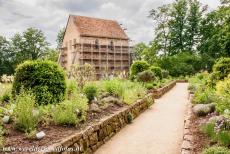
Abbey and Altenmünster of Lorsch: The remaining part of the abbey church is surrounded by a medicinal herb garden. The remaining part of the church was one of the bays of the nave of the 12th century Nazarius Basilica, the basilica was partly destroyed in 1621 during the Thirty Years' War by Spanish troops.
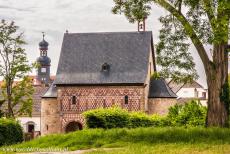
Abbey and Altenmünster of Lorsch: The King's Hall, also Königshalle or Torhalle, seen from the herb garden. The King's Hall is the oldest Carolingian building north of the Alps. The Abbey and Altenmünster of Lorsch are located near the UNESCO World Heritage Sites Messel Pit and Upper Middle Rhine Valley.
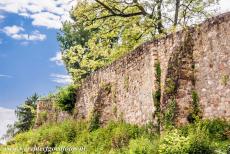
Abbey and Altenmünster of Lorsch: The remains of the ancient wall surrounding the Abbey of Lorsch, the original wall was about three metres high and had a length of around 500 metres. The Altenmünster was the mother abbey, built in 764. There is nothing left of the Altenmünster. In the 1980s, the foundation walls of the church were reconstructed.
